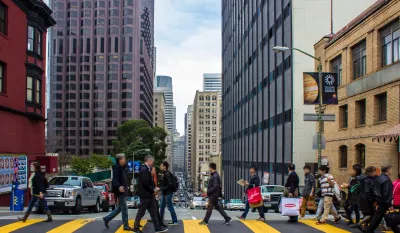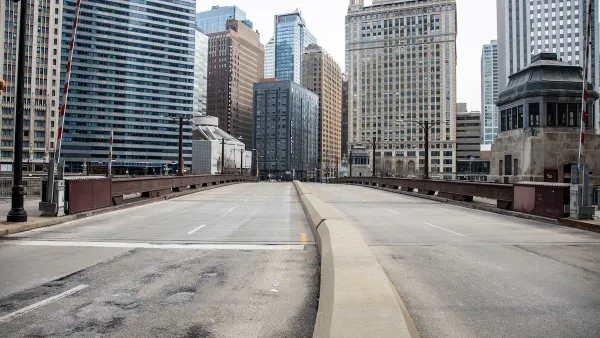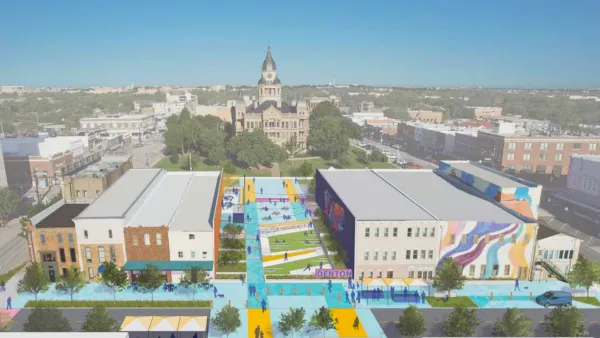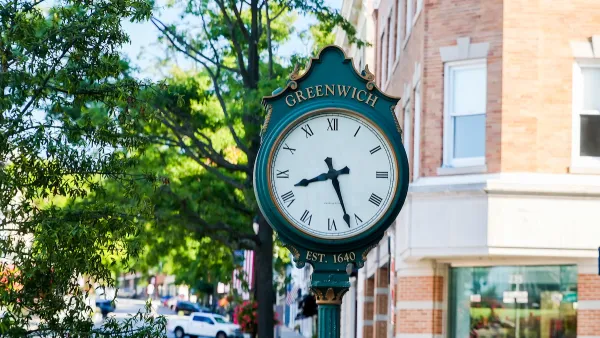Traditionally car-friendly Business Improvement Districts are turning to walkability and bike infrastructure to replace the 9-to-5 crowd and boost local economies.

In a piece for Bloomberg CityLab, John Surico describes the historically car-oriented politics of Business Improvement Districts (BIDs), business groups that emerged in the 1970s as a response to declining downtown conditions. “Historically, BIDs also typically favored access for cars, prioritizing suburban commuters and visitors with amenities like parking discounts and public lots. Indeed, the built environment of the American downtown — a ‘precarious urban monoculture’ optimized for white-collar work — is one that these groups helped cement into being.”
Now, “it’s striking to see the same groups now bang the gong for bike lanes, vehicle bans and pedestrian-focused facelifts. Reeling from the rise of remote work and the ongoing effects of the Covid pandemic, business groups are embracing policies and practices they long shunned.”
While not all BIDs are changing their views, many in the country’s biggest cities are recognizing the value of pedestrian and bicycle traffic and reorienting their efforts to new downtown residents and visitors in the post-pandemic era. “The paradigm shift that’s now underway could pay big dividends for walkability boosters — and be crucial to the survival of the urban core.”
“It took decades to create the modern office district; now that its critical vulnerabilities have been exposed, adapting these neighborhoods to again welcome a more diverse set of uses stands to be a similarly prolonged process.” Surico points out that BIDs, with their significant influence and resources, can be a key partner in creating more livable, walkable downtowns.
FULL STORY: As Downtowns Struggle, Businesses Learn to Love Bike Lanes

National Parks Layoffs Will Cause Communities to Lose Billions
Thousands of essential park workers were laid off this week, just before the busy spring break season.

Retro-silient?: America’s First “Eco-burb,” The Woodlands Turns 50
A master-planned community north of Houston offers lessons on green infrastructure and resilient design, but falls short of its founder’s lofty affordability and walkability goals.

Delivering for America Plan Will Downgrade Mail Service in at Least 49.5 Percent of Zip Codes
Republican and Democrat lawmakers criticize the plan for its disproportionate negative impact on rural communities.

Test News Post 1
This is a summary

Test News Headline 46
Test for the image on the front page.

Balancing Bombs and Butterflies: How the National Guard Protects a Rare Species
The National Guard at Fort Indiantown Gap uses GIS technology and land management strategies to balance military training with conservation efforts, ensuring the survival of the rare eastern regal fritillary butterfly.
Urban Design for Planners 1: Software Tools
This six-course series explores essential urban design concepts using open source software and equips planners with the tools they need to participate fully in the urban design process.
Planning for Universal Design
Learn the tools for implementing Universal Design in planning regulations.
EMC Planning Group, Inc.
Planetizen
Planetizen
Mpact (formerly Rail~Volution)
Great Falls Development Authority, Inc.
HUDs Office of Policy Development and Research
NYU Wagner Graduate School of Public Service





























